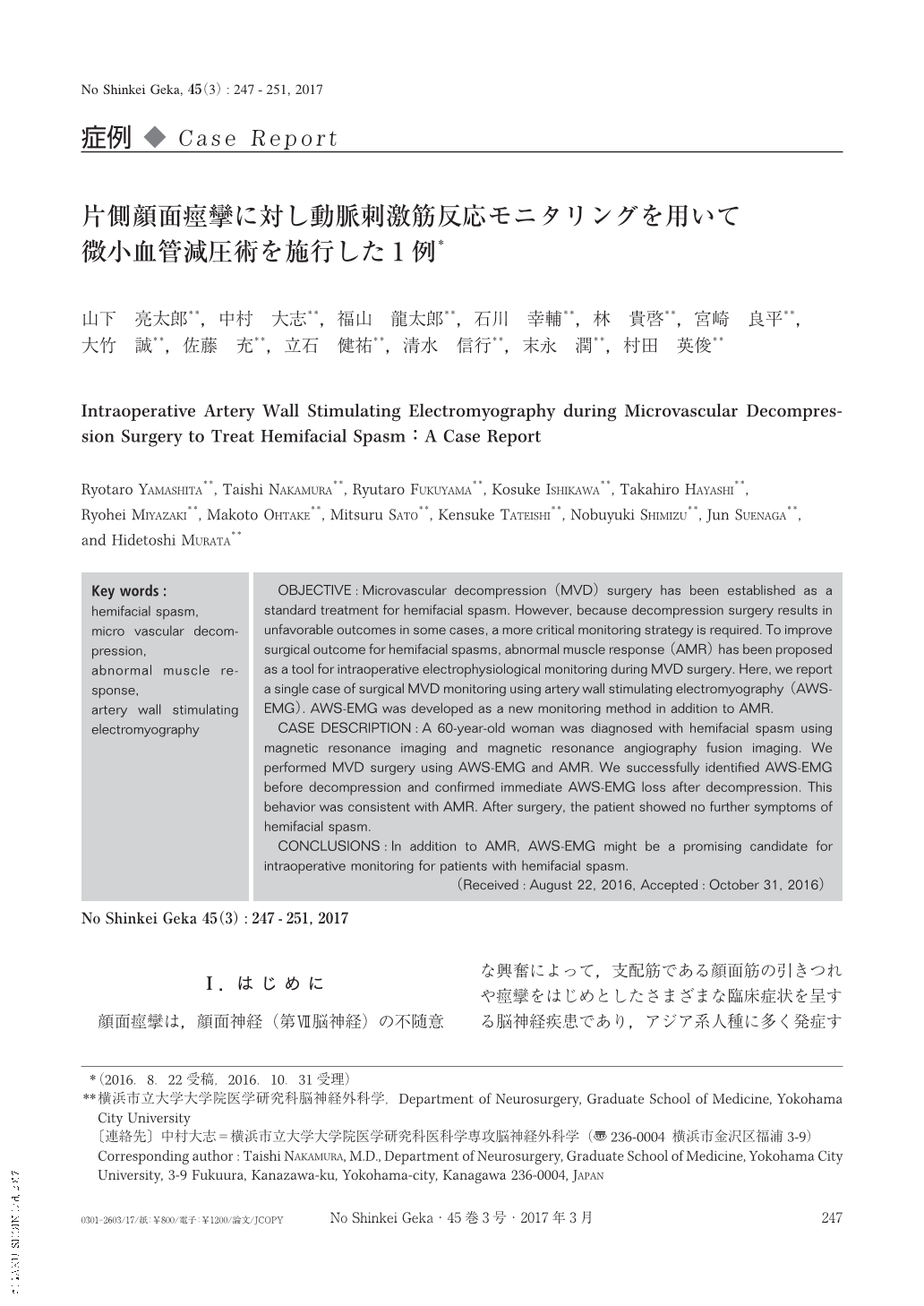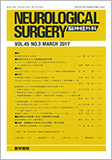Japanese
English
- 有料閲覧
- Abstract 文献概要
- 1ページ目 Look Inside
- 参考文献 Reference
Ⅰ.はじめに
顔面痙攣は,顔面神経(第Ⅶ脳神経)の不随意な興奮によって,支配筋である顔面筋の引きつれや痙攣をはじめとしたさまざまな臨床症状を呈する脳神経疾患であり,アジア系人種に多く発症することが知られている12).この主な病因として,椎骨動脈(vertebral artery:VA),脳底動脈(basilar artery:BA)または後下小脳動脈(posterior inferior cerebellar artery:PICA)あるいはその分枝が顔面神経に触れ,拍動性の圧迫を生じるためであることが知られている2,5).
Microvascular decompression(MVD)は,神経を圧迫する血管を転位させることにより神経減圧を図る手術法であり,最も効果的な治療である9).しかし,その治癒率は90.5〜96.7%と報告されており,未だ根治的治療とは言えないのが現状である3,6).
片側顔面痙攣の治療成績向上を目的として,異常筋反応モニタリング(abnormal muscle response:AMR)や動脈刺激筋反応モニタリング(artery wall stimulating electromyography:AWS-EMG)の有用性が提唱されている13).今回われわれは,片側顔面痙攣症例に対してAMR併用下にAWS-EMGを行い,術中AMRおよびAWS-EMGが検出され,かつ神経減圧によって異常波の消失を得た症例を経験したので報告する.
OBJECTIVE:Microvascular decompression(MVD)surgery has been established as a standard treatment for hemifacial spasm. However, because decompression surgery results in unfavorable outcomes in some cases, a more critical monitoring strategy is required. To improve surgical outcome for hemifacial spasms, abnormal muscle response(AMR)has been proposed as a tool for intraoperative electrophysiological monitoring during MVD surgery. Here, we report a single case of surgical MVD monitoring using artery wall stimulating electromyography(AWS-EMG). AWS-EMG was developed as a new monitoring method in addition to AMR.
CASE DESCRIPTION:A 60-year-old woman was diagnosed with hemifacial spasm using magnetic resonance imaging and magnetic resonance angiography fusion imaging. We performed MVD surgery using AWS-EMG and AMR. We successfully identified AWS-EMG before decompression and confirmed immediate AWS-EMG loss after decompression. This behavior was consistent with AMR. After surgery, the patient showed no further symptoms of hemifacial spasm.
CONCLUSIONS:In addition to AMR, AWS-EMG might be a promising candidate for intraoperative monitoring for patients with hemifacial spasm.

Copyright © 2017, Igaku-Shoin Ltd. All rights reserved.


